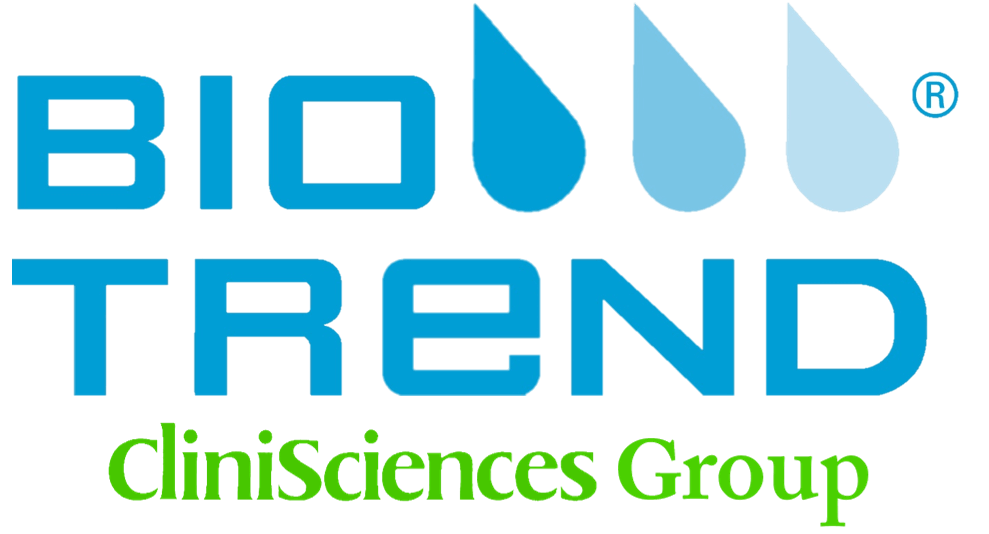CSF1R, Recombinant, Human, aa20-517, hIgG-His-Tag (CSF1R, C-FMS, CD115, CSF-1R, CSFR, FIM2, FMS, HDLS, M-CSF-R, Macrophage Colony-Stimulating Factor 1 Receptor)
Katalog-Nummer 470224-5ug
Size : 5ug
Marke : US Biological
470224 CSF1R, Recombinant, Human, aa20-517, hIgG-His-Tag (CSF1R, C-FMS, CD115, CSF-1R, CSFR, FIM2, FMS, HDLS, M-CSF-R, Macrophage Colony-Stimulating Factor 1 Receptor)
Clone Type
PolyclonalGrade
Highly PurifiedAccession #
NP_005202Shipping Temp
Blue IceStorage Temp
-20°CCSF1R, also known as macrophage colony-stimulating factor 1 receptor, is a member of the type 3 subfamily of receptor tyrosine kinases. It is expressed primarily on cells of the monocyte and macrophage lineage, stem cells, and in the developing placenta and mediates most of the biological effects of this cytokine. This protein is consisted by an extracellular ligand-binding domain, a single membrane-spanning segment, and an intracellular tyrosine kinase domain. CSF1 and this receptor were initially implicated as essential for normal monocyte development as well as for trophoblastic implantation. This apparent role of CSF1/CSF1R in normal mammary gland development is very intriguing because this relationship has also been found in the biology of breast cancer in which abnormal expression of CSF1 and its receptor. Also, increased levels of CSF1R are found in microglia in Alzheimer's disease and after brain injuries. The increased receptor expression causes microglia to become more active. Recombinant human CSF1R, fused to hIgG-His-Tag at C-terminal, expressed in Insect Cell and purified by using conventional chromatography techniques.||Source:|Recombinant protein corresponding to aa20-517 from human CSF1R, fused to hIgG-His-Tag at C-terminal, expressed in Insect Cell.||Molecular Weight:|~82.1kD (737aa)|~70-100kD (SDS-PAGE under reducing conditions.)||Biological Activity:|Measured by its ability to inhibit M-CSF dependent proliferation of M-NFS-60 mouse myelogenous leukemia lymphoblast cells. The ED50 for this effect is less or equal to 100ng/ml in the presence of 10ng/ml M-CSF.||AA Sequence:|IPVIEPSVPE LVVKPGATVT LRCVGNGSVE WDGPPSPHWT LYSDGSSSIL STNNATFQNT GTYRCTEPGD PLGGSAAIHL YVKDPARPWN VLAQEVVVFE DQDALLPCLL TDPVLEAGVS LVRVRGRPLM RHTNYSFSPW HGFTIHRAKF IQSQDYQCSA LMGGRKVMSI SIRLKVQKVI PGPPALTLVP AELVRIRGEA AQIVCSASSV DVNFDVFLQH NNTKLAIPQQ SDFHNNRYQK VLTLNLDQVD FQHAGNYSCV ASNVQGKHST SMFFRVVESA YLNLSSEQNL IQEVTVGEGL NLKVMVEAYP GLQGFNWTYL GPFSDHQPEP KLANATTKDT YRHTFTLSLP RLKPSEAGRY SFLARNPGGW RALTFELTLR YPPEVSVIWT FINGSGTLLC AASGYPQPNV TWLQCSGHTD RCDEAQVLQV WDDPYPEVLS QEPFHKVTVQ SLLTVETLEH NQTYECRAHN SVGSGSWAFI PISAGAHTHP PDEFLFTPLE PKSCDKTHTC PPCPAPELLG GPSVFLFPPK PKDTLMISRT PEVTCVVVDV SHEDPEVKFN WYVDGVEVHN AKTKPREEQY NSTYRVVSVL TVLHQDWLNG KEYKCKVSNK ALPAPIEKTI SKAKGQPREP QVYTLPPSRD ELTKNQVSLT CLVKGFYPSD IAVEWESNGQ PENNYKTTPP VLDSDGSFFL YSKLTVDKSR WQQGNVFSCS VMHEALHNHY TQKSLSLSPG KHHHHHH||Endotoxin: |<1EU/1ug (LAL)||Storage and Stability:|May be stored at 4°C for short-term only. Aliquot to avoid repeated freezing and thawing. Store at -20°C. Aliquots are stable for 12 months after receipt. For maximum recovery of product, centrifuge the original vial after thawing and prior to removing the cap.



